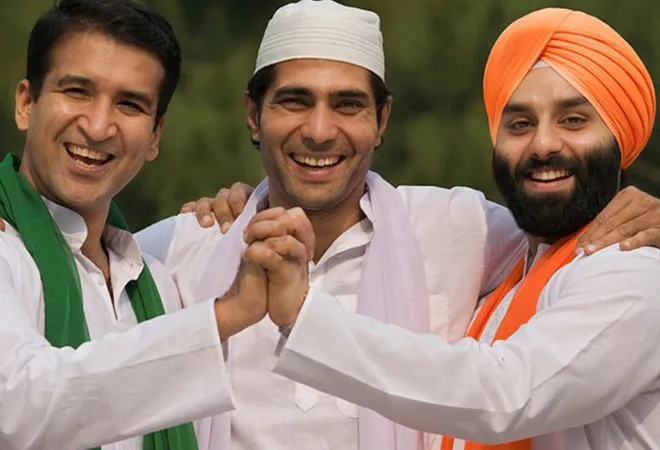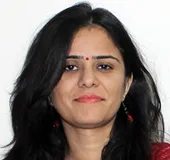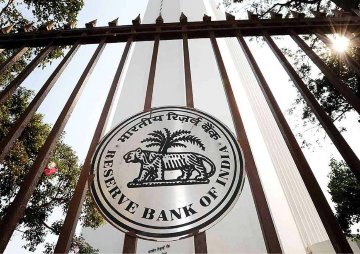
It is going to be seven decades since India attained its Independence. And the country has flourished with its territorial and ideological aspects intact. Different communities have been co-existing peacefully for a long time. However, there seems to be a constructed anxiety and disproportionate concern among the majority community about the presence of Muslims in the country and they being a threat to the idea of India.
The high-intensity 'Moral Panic' exhibited by the majority community in the present times is not directly related to any evidence of actual harm. Moral Panic was a concept propounded by British sociologist Stanley Cohen in 1972 in his book 'Folk Devils and Moral Panics'. He defines Moral Panic as “... a condition, episode when a person, or group of persons emerges to become defined as a threat to societal values and interests: its nature is presented in a stylised and stereotypical fashion by the mass media; the moral barricades are manned by editors, bishops, politicians and other right-thinking people; socially accredited experts pronounce their diagnoses and solutions; ways of coping are evolved, or (more often) resorted to; the condition then disappears, submerges or deteriorates and becomes more visible.”
The 172.2 million (14.2 per cent of India’s population) Muslims in India have been stripped of their sectoral and regional differences; and have been projected as a monolithic community with sporadic targeting of individuals of the Muslim community for eating beef, having allegiance to a neighbouring country, or for being 'backward'.
The projection by the Pews Research Centre that by 2050 India will be home to the largest Muslim population in the world (overtaking Indonesia) has also been a cause of concern for the majority community.
Cohen’s work can help in comprehending the ongoing socio-political development in the country. The reaction of the majority of Hindus has qualified as moral panic as it fulfils the following conditions. Cohen says that the population, first of all, should have “concern rather than fear” for potential or imagine threat. The NDA government had released religious census in 2015 in the public domain revealing that Muslim population has registered a 24 per cent increase from 2001 to 2011 against the national average of 18 per cent. This was widely reported in the media and has been regularly exploited by the right-wing leaders to instil concern in the majority community. However, the fact that India’s Muslim population is growing slower than it had been in the previous decades and its growth rate has slowed more sharply than that of the Hindu population has been conveniently overlooked.
Second, there should be a moral outrage against the people/community perceived as the problem. The hostility should be on the rise and through stereotyping, lines drawn across “us” versus “them”; and “folk devils” are created. Increasingly, being Muslim has become metonyms for misogyny and violence; and being Muslim is being seen in contravention with being an Indian.
Stereotyping
This stereotyping has taken its time to gain roots. In the past few years the prejudices that Muslims have many children and are soon going to overtake Hindus have become mainstream. Muslim men are being vilified for being polygamist, who are divorcing their wives by uttering Talaq thrice. Perception is built that all Muslim women clad in Burqa need a rescuing act. Suddenly, factors such as lack of education, patriarchal system of the Indian sub-continent have ceased to become the cause of the social evils. The highly educated assertive Muslim women and men living next door have been relegated to being mere aberrations.
The new crop of soap operas that conflate both mythology and history have also contributed in giving life to these stereotypes. So, Akbar will be depicted as a ruler with penchant for senseless bloodbath, who does not respect women and would take many wives. But his opponent Maharana Pratap would be a one woman man with a heart of gold. Non-vegetarianism is also portrayed as the potential cause of the barbarism of the Muslim rulers as against the benign Hindu rulers who eschewed non-veg. No wonder a beef eater or a meat eater is often used as slurs in the lynch-ready fast becoming intolerant India.
The cultural and regional aspects of religion have also been blurred. A Rajasthani Muslim would speak fluent Urdu as against Rajasthani or Hindi like the Hindus.
The holy cow has become another rallying cry. The targeting of slaughter houses on the pretext of clamping down on illegal businesses is just a way of targeting the community that is primarily involved in the meat industry. If illegal business was the target, majority of the businesses would have faced the clamp down.
Third, there should be a general agreement in the society that the problem poses a threat and “something needs to be done”. The consensus does not need to pervade the whole society, rather it should be supported by the majority of the elite, the mass media and the interest groups. A cursory review of the messaging coming from the government and a look at the news channels will depict the end of political correctness with regard to Islam. There seems to be a general consensus in the public that Muslims being followers of Islam, a foreign religion, do not belong to the country.
Fourth, the potential damage and moral offensiveness are generally exaggerated. It is difficult to measure dis-proportionality of response. But, Goode and Ben-Yehuda offers criteria for discerning dis-proportionality.
This means that “the panic erupts and dissipates suddenly and without warning. So the hostility against Muslims had a latent presence for a long time before eruption and the moral panic in the form of lynching. The reaction would be short-lived, even though some reaction might get “institutionalised” and leave a “cultural or institutional legacy”.
Conditions for triggering of moral panic
There are three possible explanations for the triggering of moral panic.
First of all, a suitable enemy that can be easily denounced and has little or no access to the ‘battlefields of cultural politics’ like media. According to the Sachhar Committee report, Muslims are not only under-represented in the government but also in media organisations. This means that the coverage about Muslim and Islam will convey the perspective of one particular section of the society.
Second requirement is the presence of a suitable victim. Depicting inter-religious marital relations as Hindu girls being lured by Muslim men in the name of “Love Jihad” is enough to whip up Hindu emotions against Muslims. The rhetoric of being victimised by the ‘Muslims’ in the changing demographics of India has been a constant.
Third element is the widespread consensus on associating Islam with fanaticism and misogyny. This consensus not only is prevalent in the society but also in the political establishment.
Since the first time the concept of moral panic gained prominence in 1972, it has been revisited many a times. McRobbie and Thornton (1995) stressed the role of the mass media in causing moral panic. They disagreed with Cohen’s assessment that the suitable enemy does not have access to “the battlefields of cultural politics”. They argued that in the multi-mediated society, audience has far more say in shaping the content of the media. So the “folk devils”, portrayed as a threat to the societal values, do fight back, but the creation of moral panic hinges on the stand taken by elites such as journalists, experts and politicians. The message of “folk devils” might not be well received owing to the stand taken by the elites. So, Muslims might be able to transmit their messages to counter the popular attitude and beliefs but it is seldom that they would get access to the mainstream media like high circulating newspaper. The problem with Islam and Muslims is not that there are negative stories about them in the media but that there are very less or no positive stories about them.
Ritu Sharma has been a journalist for nearly a decade, covering defence and security issues for major part of her career. She has worked with PTI, IANS and The New Indian Express.
The views expressed above belong to the author(s). ORF research and analyses now available on Telegram! Click here to access our curated content — blogs, longforms and interviews.



 It is going to be seven decades since India attained its Independence. And the country has flourished with its territorial and ideological aspects intact. Different communities have been co-existing peacefully for a long time. However, there seems to be a constructed anxiety and disproportionate concern among the majority community about the presence of Muslims in the country and they being a threat to the idea of India.
The high-intensity 'Moral Panic' exhibited by the majority community in the present times is not directly related to any evidence of actual harm. Moral Panic was a concept propounded by British sociologist Stanley Cohen in 1972 in his book 'Folk Devils and Moral Panics'. He defines Moral Panic as “... a condition, episode when a person, or group of persons emerges to become defined as a threat to societal values and interests: its nature is presented in a stylised and stereotypical fashion by the mass media; the moral barricades are manned by editors, bishops, politicians and other right-thinking people; socially accredited experts pronounce their diagnoses and solutions; ways of coping are evolved, or (more often) resorted to; the condition then disappears, submerges or deteriorates and becomes more visible.”
It is going to be seven decades since India attained its Independence. And the country has flourished with its territorial and ideological aspects intact. Different communities have been co-existing peacefully for a long time. However, there seems to be a constructed anxiety and disproportionate concern among the majority community about the presence of Muslims in the country and they being a threat to the idea of India.
The high-intensity 'Moral Panic' exhibited by the majority community in the present times is not directly related to any evidence of actual harm. Moral Panic was a concept propounded by British sociologist Stanley Cohen in 1972 in his book 'Folk Devils and Moral Panics'. He defines Moral Panic as “... a condition, episode when a person, or group of persons emerges to become defined as a threat to societal values and interests: its nature is presented in a stylised and stereotypical fashion by the mass media; the moral barricades are manned by editors, bishops, politicians and other right-thinking people; socially accredited experts pronounce their diagnoses and solutions; ways of coping are evolved, or (more often) resorted to; the condition then disappears, submerges or deteriorates and becomes more visible.”
 PREV
PREV


